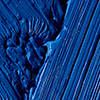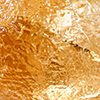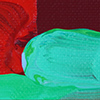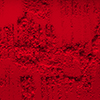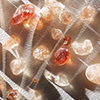Malachite Green pigment

Green Verditer – Green Bice – Mountain Green – Green Carbonate Of Copper – Vert De Montagne – Berg-GrüN – MalachitgrüN
History, chemistry and application
This green copper mineral was employed as a paint by the ancients. It occurs in many European, Asiatic, African, and American localities. The mines at Ekaterinburg and Nischne Tagilsk in Russia, and at Burra-Burra in South Australia, furnish malachite of fine colour. Its variations in depth of colour are due less to impurities than to differences in its state of aggregation. Deposited in cavities by the slow percolation of water through copper-bearing rocks. Its composition is that of a hydrate and carbonate of copper. It may be represented by the formula CuCO3,CuH2O2. It contains, therefore, less of the copper carbonate than azurite, or blue verditer. In the Middle Ages, malachite was called verde azzurro (green-blue) in recognition of its close association with azurite.
Varying in colour from cold to bright yellow-green, malachite was used in Europe and the Far East for centuries. It has been found in medieval illuminated manuscripts dating back to the 8th century, and was a colour of great importance throughout the Renaissance.
Malachite as an oil-paint has often proved to be permanent, although it may seem to acquire a dull, brownish hue, owing to the darkening and yellowing of the oil; sometimes, however, it becomes somewhat olive in colour. In admixture with cadmium yellow it is liable to blacken. It is so easily injured by impure air when unprotected by any hydrofuge, that it is quite inadmissible as a water-colour. In old tempera paintings it is sometimes found to have stood well; but the sulphur from the egg-medium and from the size has not infrequently browned it.
Malachite requires no other treatment than careful grinding to fit it for use as an artists’ pigment. The raw material must, however, be carefully selected, and all visible impurities, such as ochreous veins and deposits, and azurite, completely removed. It is then washed in swirling water to separate the green particles, just like panning for gold. To be useful as a bright green, it must be ground coarsely. The more finely it is ground, the paler and more transparent the powder becomes. In The Craftsman’s Handbook, Cennino Cennini advises that ‘if you were to grind it too much, it would come out a dingy and ashy colour’.
By the end of the 18th century, malachite had been replaced with more easily obtained synthetic alternatives.
